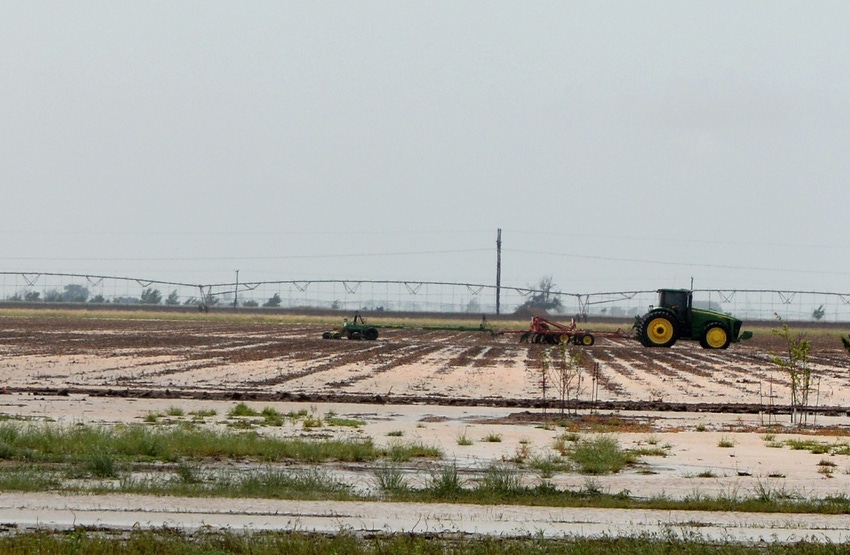
Heavy, persistent rainfall during much of the Southwest region’s spring planting season likely will mean many farmers will not meet insurance planting deadlines and will consider switching to other crops with later deadlines or taking the prevented planting option with insurance providers.
Prevented planting is not a one-size fits all program but provides producers several options, including planting past the deadline for a limited time and incurring a coverage penalty for each day planting is delayed (typically 1 percent per day past the deadline). The final planting deadline, however, may not be changed.
Southwest Farm Press touched base with a spokesperson for the USDA Risk Management Agency (RMA) to assess guidelines on filing for prevented planting. Below are a few things folks need to consider, according to RMA.
For the latest on southwest agriculture, please check out Southwest Farm Press Daily and receive the latest news right to your inbox.
If a producer is prevented from planting acreage, he is required to provide a notice that he was prevented from planting an insured crop within 72 hours after the final planting date if he does not intend to plant the insured crop during the late planting period or if a late planting period is not available; or if he determines he will not be able to plant the insured crop within an available late planting period
Due to contractual agreements between producers and the Approved Insurance Providers (AIPs), as well as RMA’s contract with the AIPs, the final planting dates cannot be moved. While this is not the ideal outcome farmers want, the policy does provide for circumstances such as this. Producers unable to plant may be able receive preventing planting payments or receive a reduced insurance guarantee if they plant within the late planting period.
The final planting dates for crops are included in a producer’s crop insurance policy with the AIP and were made available to producers before the sales closing date. As stated in the insurance policy, and in federal regulations (7 C.F.R. 457.8), terms of the contract cannot be waived by any party. As a result any change in the dates is expressly prohibited.
Deadline is non-negotiable
In addition, RMA cannot move the final planting date without violating its contract, the Standard Reinsurance Agreement (SRA), with the AIPs. The SRA states that RMA reinsures policies in effect as of the contract change date. The final planting dates in this case were agreed upon on November 30, 2014, the contract change date. If RMA moved the dates, RMA would be violating its contract with the AIPs.
Also, changing the terms of the policy after the contract change date changes the risk profile of the crop, which means premiums and liability the AIPs and producers agreed upon no longer reflect the actual risk of the crop.
RMA encourages producers with any question on policy contingencies to consult with their insurance agents as soon as possible to discuss the best options for individual farming operations. Producers may be able to receive prevented planting payments, which means they could receive up to 50 percent of their production guarantee per acre, depending on the crop. In addition, producers can plant after the final planting dates for seven days and receive a reduction of 1 percent of their total guarantee for each day after the final planting date. Prevented planting payments and the late planting options were designed to address these types of situations.
RMA also encourages producers to keep good records to facilitate prevented planting claims.
Prevented Planting Choices
Producers may:
Plant the insured crop during the late planting period. The late planting period is seven days after the final planting date for cotton. Check the policy or talk to your crop insurance agent for more information. For most crops, the timely-planted, production guarantee is reduced 1 percent per day for each day planting is delayed after the final planting date.
Plant the insured crop after the late planting period (or after the final planting date if a late planting period is not available).
Leave the acreage idle and receive a full prevented planting payment.
Plant a cover crop during the late planting period and receive a full prevented planting payment (but do not hay or graze this cover crop before November 1; otherwise, harvest it at any time). If you hay or graze it before November 1, you will not receive a prevented planting payment for your first crop.
Plant a cover crop after the late planting period and hay or graze it before November 1 and receive 35 per-cent of a prevented planting payment for your first crop or wait to hay or graze it on or after November 1 and receive a full prevented planting payment for your first crop.
Plant a second crop after the late planting period (if you are also prevented from planting through the late planting period). You can also plant after the final planting date if no late planting period is available. You may receive a prevented planting payment equal to 35 percent of the prevented planting guarantee.
More information is available to help farmers make decisions based on their crop insurance policies. RMA has a resource page on Prevented planting: http://www.rma.usda.gov/news/currentissues/prevented/
Also available is a drought fact sheet: http://www.rma.usda.gov/pubs/rme/ppdrought.pdf
and a flood fact sheet: http://www.rma.usda.gov/pubs/rme/ppflood.pdf
About the Author(s)
You May Also Like






